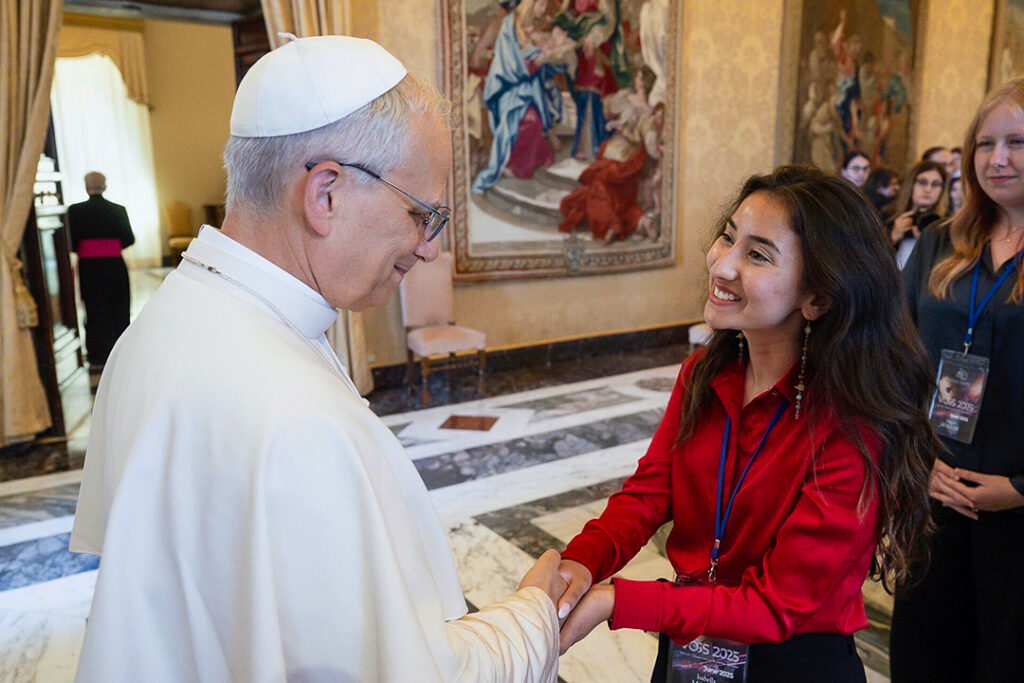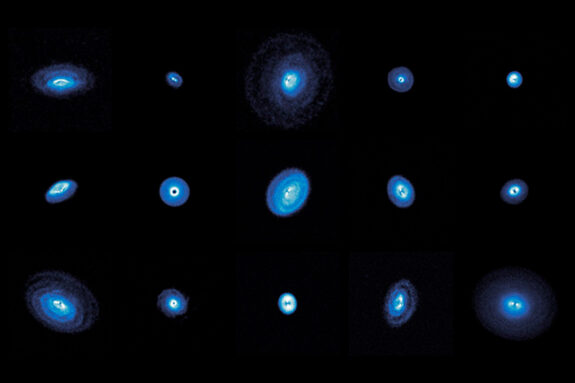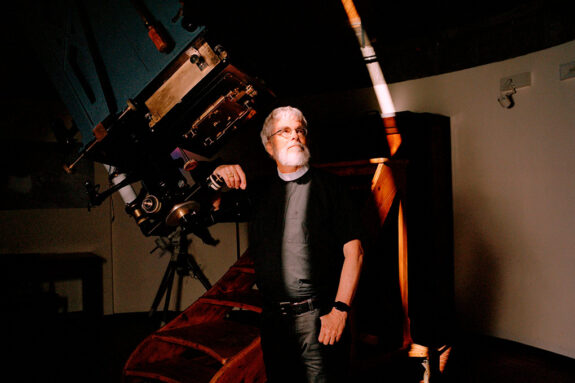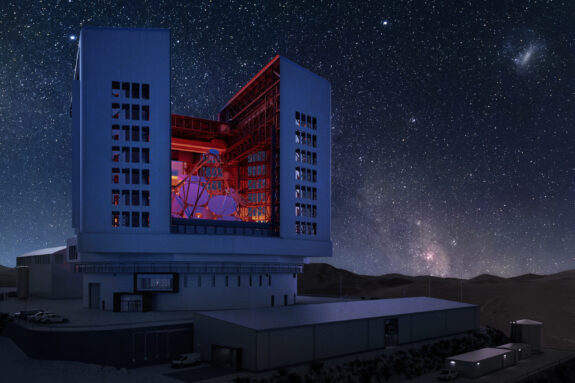Student perspective: what does one wear to meet the Pope?
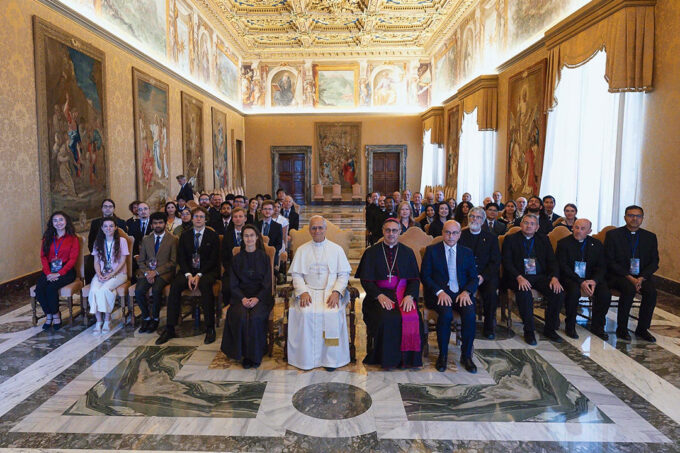
Pope Leo XIV posing for a photo with VOSS 2025 students on June 16, 2025. Image credit: Vatican Media
I never thought I would have to ask myself the question, “What does one wear to meet the Pope?”. And yet, this summer, I did.
I’m a rising second-year PhD student in the Department of Earth, Atmospheric and Planetary Sciences (EAPS). My research focuses on protoplanetary disks, which are vast, rotating clouds of gas and dust that are the birthplaces of planets. I work on measuring how much mass these disks contain, which is a fundamental question because the total mass sets the stage for how planets form, what kinds of planets emerge, and ultimately how planets like Earth might come to be.
Now, you might be thinking: ok, Bella is a super cool scientist meeting the Pope… science and religion? Isn’t that usually a recipe for conflict? After all, in history, we had Galileo vs. the Church. Is Bella about to tell us how she squared off with the Pope 1v1? Not quite….
How does one meet the Pope?
It turns out the Catholic Church has a long history in astronomy. They have their own observatory, their own summer school for young astronomers, and even a papal astronomer—fun fact: Brother Guy Consolmagno ’74, SM ’75, who is the Vatican Observatory director, studied right here at MIT EAPS! When I learned about the Vatican Observatory Summer School (VOSS) through a colleague, she explained how it brings students from around the world together every two years, and that every cohort meets the Pope in a private audience. Naturally, I decided to apply and was thrilled to be accepted.
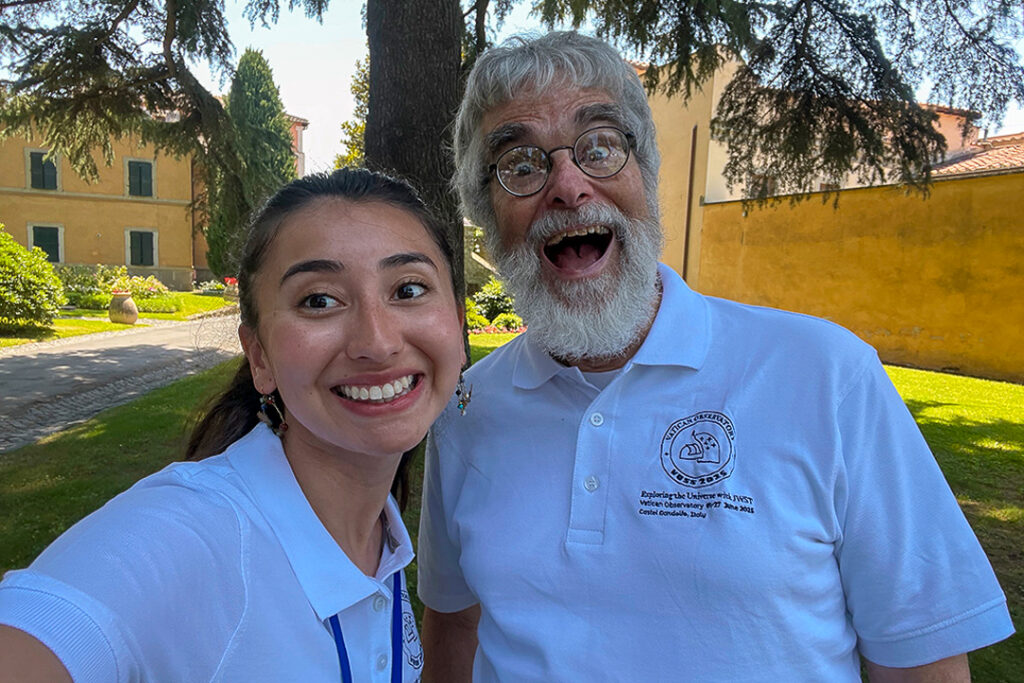
In July, I traveled to Castel Gandolfo, a hillside town just outside Rome that is home to the Pope’s summer residence and gardens, and also the site of the Specola Vaticana (the Vatican Observatory). This year’s theme focused on the James Webb Space Telescope (JWST), NASA’s most powerful space observatory, designed to peer back to the earliest galaxies, study exoplanet atmospheres, and uncover the processes that shape planetary systems. During the four-week program, we rotated through planetary science, extragalactic astronomy, instrumentation, and data analysis. One of the most memorable lectures I attended was on late-stage infall of mass onto protoplanetary disks. The speaker described the process where gas and dust ‘rain down’ from the surrounding cloud even after planets begin forming, reshaping the disk’s chemistry, stability, and planet formation timeline.
There was a lot of studying, but we scientists also know how to have some fun! The program often had activities planned each weekend, such as a guided Papal Garden tour, where we strolled through meticulously kept grounds that felt more like something out of a Renaissance painting than real life. On another weekend, we visited Subiaco, renowned for its monasteries carved into the hills. We ended that day at a waterfall, where a group of children started serenading us with songs. It was one of those “only in Italy” moments; to describe it as surreal is an understatement. Even in the week, we still found breaks and adventures. There were bachata dance lessons, karaoke nights that sometimes got a little too lively, and late-night gelato runs where we talked about the intersections of science and religion while lemon gelato dripped down our hands.
All of this was incredible, but the highlight still loomed ahead: meeting the Pope.
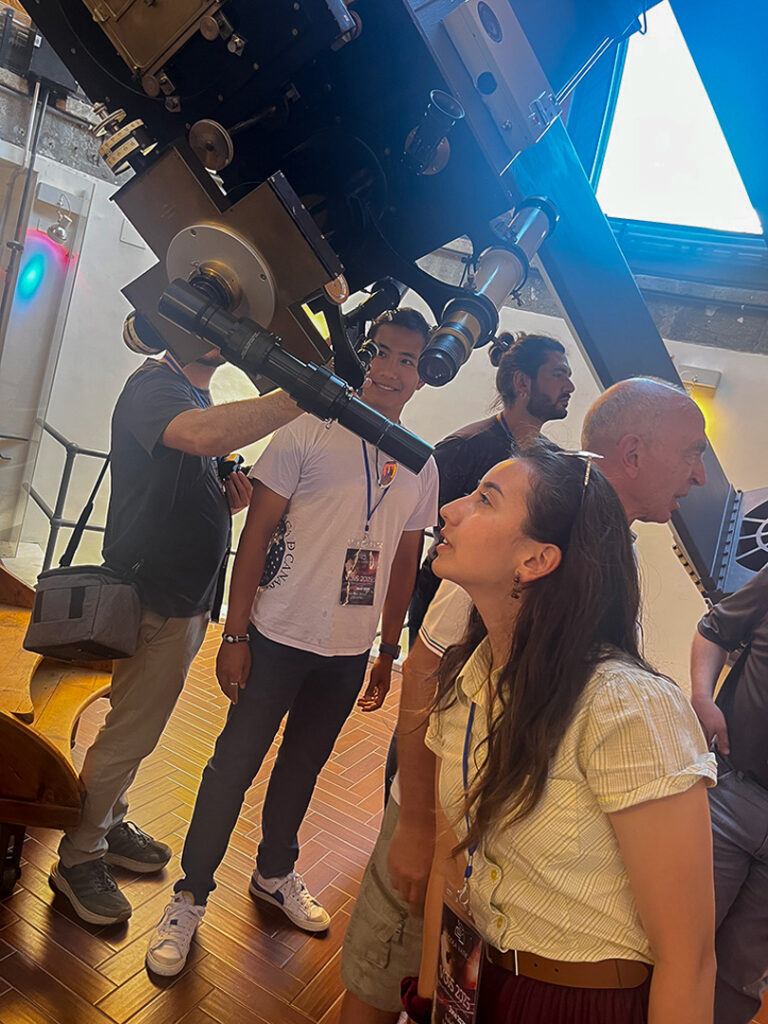
Where does one meet the Pope?
While we were technically on Vatican City property, we were not in Vatican City proper. Castel Gandolfo is the Pope’s summer palace, and because it wasn’t vacation time for him yet, we had to go to him.
On the day of, we woke up at around 5 am, sleepily boarded charter buses, and set off on the hour-long ride to Rome, hoping to beat the traffic. As you can imagine, astronomers aren’t exactly “morning people.” We were dropped off at a discreet back entrance that took us to the Apostolic Palace. The palace, which holds the Pope’s private apartments and serves as his official residence, felt imposing even from this quieter side.
After about thirty minutes of waiting, we were ushered into the palace and up a series of echoing staircases until we stepped into the Consistory Hall. The room itself felt like walking into history. Gilded ceilings shown overhead, frescoes lined the walls with biblical and historical scenes, and marble floors reflected the light streaming in through tall windows. Traditionally used as an audience hall where popes met with cardinals and world leaders, it had welcomed kings, queens, and heads of state for centuries… and now it was filled with a crowd of wide-eyed graduate students.
Now that we were so close to finally meeting the pope, we all suddenly became self-conscious: we straightened our posture, smoothed down our jackets, adjusted our shoes, and tried, unsuccessfully, to keep our palms from sweating.
What does one say to the Pope?
Pope Leo XIV is the first Pope to be born in the United States, and I was the only United States representative in my cohort. But, even with that small connection, I still couldn’t just walk up and say, “Hey, what’s up, dude?” Cue the panic.
We waited for the Pope in the audience hall for about thirty minutes—after all, the Pope is a busy man. Somewhere in that stretch of time, my classmates and I realized none of us actually had a plan. We began whispering trial introductions, role-playing greetings, and testing out different lines, trying our best not to sound awkward in front of the most recognizable religious figure alive. In the end, I decided to lean on my own Catholic heritage and ask for a personal blessing.
When Pope Leo finally entered, the room fell completely silent. He gave a short speech about the importance of sharing knowledge and the joy of discovery for the benefit of humanity. He even referenced the James Webb Space Telescope as a symbol of what international collaboration can achieve, noting how it has already reshaped our view of the universe. Afterwards, he offered a blessing, at which point several of us immediately pulled out our Overleaf research papers to get them blessed, too. Classic astronomers.
After his talk, we lined up for our brief one-on-one introductions. My turn came faster than I expected. I stepped forward, managed not to trip over myself, and said: ‘Holy Father, may I ask for your blessing for my family and friends back home?’ He looked directly at me, gave a small, knowing smile, and nodded as he raised his hand in blessing. It was less than a minute, but it was warm, kind, and something I will always remember.
Which brings me back to the original question…. What does one wear to meet the Pope?
Simple. Cardinal red.
